On War Service Badges 1914-1916:
There was another reason for the issue of the "On War Service" badges. When the war began, voluntary enlistment was unregulated and skilled men were joining up and leaving companies with a shortage of skilled labour essential to maintaining the country's war capability. "Badging" essential workers helped to retain those skilled workers. Although not official these company "On War Service" badges were tolerated by the War Office.
The Admiralty obviously thought that workers with war service badges was a good idea as in late 1914, they issued "The Admiralty Badge" to shipyard workers "whose services were indispensable for the rapid completion of HM Ships and Armaments". The Admiralty Badges were initially un-numbered and this resulted in men that were otherwise eligible for enlistment in the services wearing the badge in order to avoid service in the colours. This was later rectified with the issue of numbered badges in early 1916 to replace those un-numbered ones. There was strict criteria for the issue of the Admiralty Badge and this was detailed in an Admiralty memo of the 26th September 1914 in that it should only be given to essential war workers and that wholesale or indiscriminate issues should not be made. The memo goes onto stress that any man who could be spared to join the colours should not be badged and that any man ceasing to perform essential war work or leaving the company is to return his badge to his employer and that the unauthorised transfer of a badge to another man was forbidden.
Sometime in early 1915, the War Office followed suit and issued the "On War Service 1915" badge - at first a oval blue enamelled badge but with a design in its centre looking very much like the cap badge of the Army Ordnance Corps. A cheaper plain brass stamped badge was issued later when the cost of issuing large numbers of the enamelled badges was realised. The "On War Service 1915" badge was issued to men engaged in essential war work (other than shipyard work) and a list of certified occupations drawn up. Oddly, this list did not include coal miners - at a time when coal exports to France were at a million tons per month with double that required.
On the 27th March 1915 the War Office issued a memoranda about the 1915 and 1914 badges to recruiting officers stressing that these were the only official badges. Private badges were still being issued by companies but these would not provide the wearer with any protection from accusations of “shirking and slacking” and would certainly not enable the wearer to avoid compulsory military service when it was introduced in 1916. Some of the private company badges looked quite authoritative, even using without permission "O.H.M.S." on them.
Private "On Service Badges" were made illegal on the 4th August 1915 and any companies that had been allowed to issue their own badges were instructed to withdraw them and issue official badges instead.
In May 1916, the War Office (Ministry of Munitions) issued a badge exclusively for women workers. Women, of course were not eligible for service in the Armed Forces and there was a lot of opposition to its issue but finally the Committee On War Service Badges gave in . Women were already wearing private company badges (although these were made illegal in 1915) and it was seen that the wearing of an official badge would recognise the valuable contribution women were making to the war effort. If nothing else, it would mean the wearer would get a seat on a bus!
purchase new rolex pearlmaster rolex calibre 2836 2813 18946 unisex silver dial.full collection of men's and ladies' vape de blueberry to buy online.
The women's badge was not a badge at all but a triangular brooch - women
do not have button holes on their clothes - and issued to women working
in the munitions factories. This included skilled and unskilled workers,
clerical staff, charladies and even canteen workers.
From May to December 1916 over 270,000 women’s On War Service badges were issued.J. R. Gaunt and Son::
J. R. Gaunt and Son was established in 1750 and has been producing military and uniform buttons since 1870 in Birmingham and in London from 1899. It is now part of the Firmin Group, a company that specialises in the manufacturer of military uniforms and accessories. The Firmin company has a long history that dates back to 1677 and they provide "a full design and make up service for high quality Orders, Decorations & Medals and State Gifts." J. R. Gaunt & Son is an official supplier of ribbon to HM The Queen and holds a Royal Warrant.Woolley & Co.::
Woolley & Co. of Birmingham appear to have a long history dating back to at least 1788, when they were making "1788 pattern light dragoon sabres" and later with the "1796 pattern cavalry troopers sword".Arthur Fenwick & Company Ltd::
Arthur Fenwick & Company Ltd, Goldsmiths of Birmingham was established in 1888 as a manufacturer of both full size and miniature medals, Orders of Chivalry, Masonic jewels and civic regalia. In addition to manufacturing the 'On War Service 1914' badge was commissioned by the government to provide the 1914-15 Star, the British War and Victory Medals.J. A. Wylie & Co London::
J. A. Wylie and Company made the other On War Service badges as well as Girl Guide badges and badges for various railway companies, including the Hull and Barnsley Railway, the Great Eastern Railway and the Glasgow & South Western Railway.
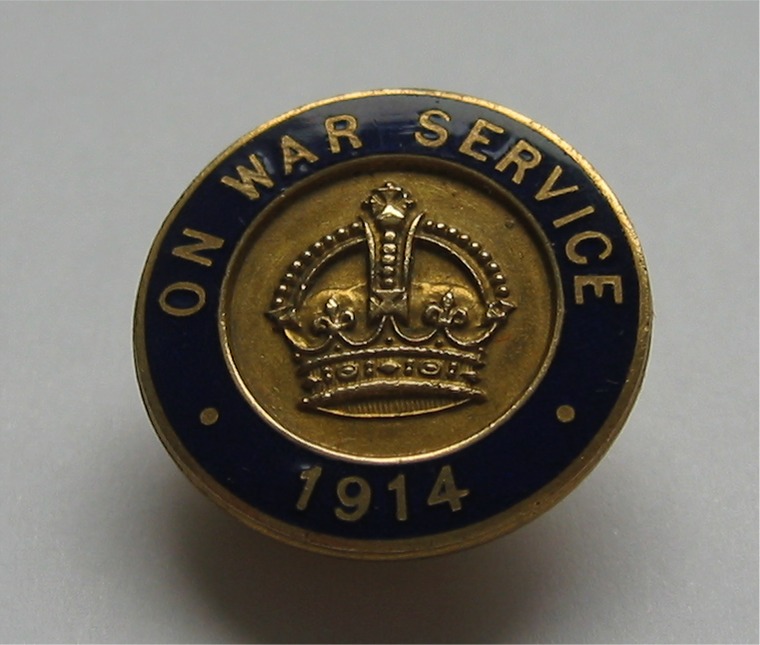
On War Service 1914
The Admiralty Badge
Manufactured by Arthur Fenwick Ltd. of Birmingham
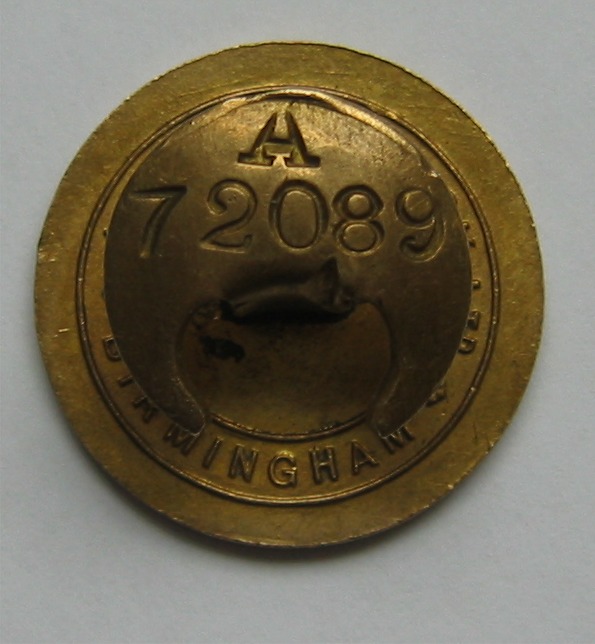
On War Service 1914 (back)
Number 72089
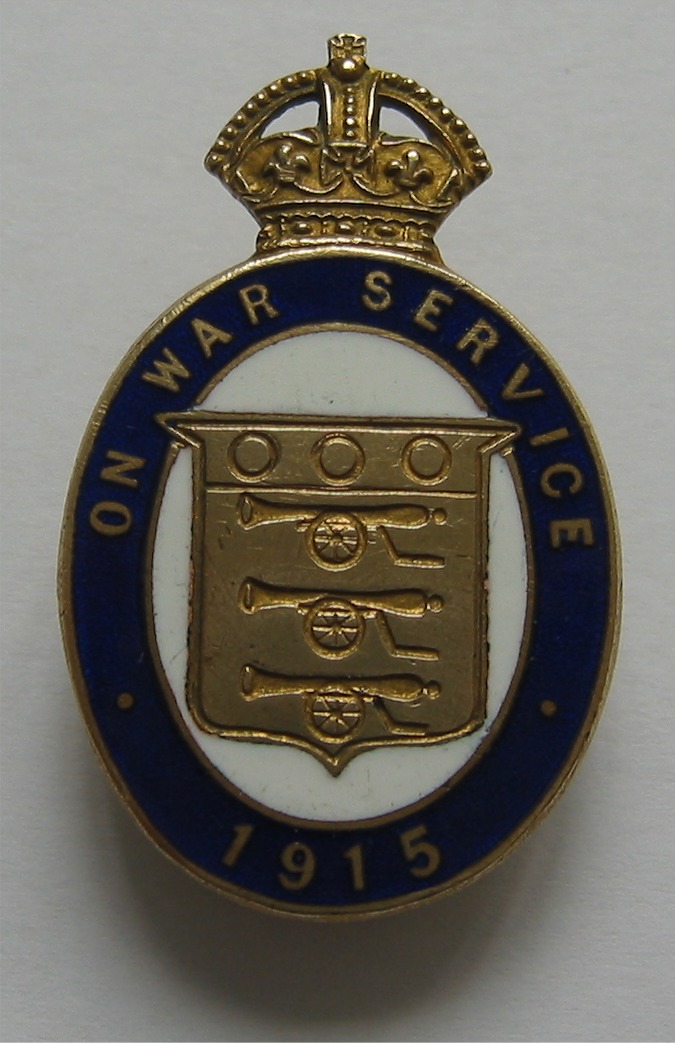
On War Service 1915
The earlier enamelled badge
Manufactured by J.R. Gaunt & Son
London
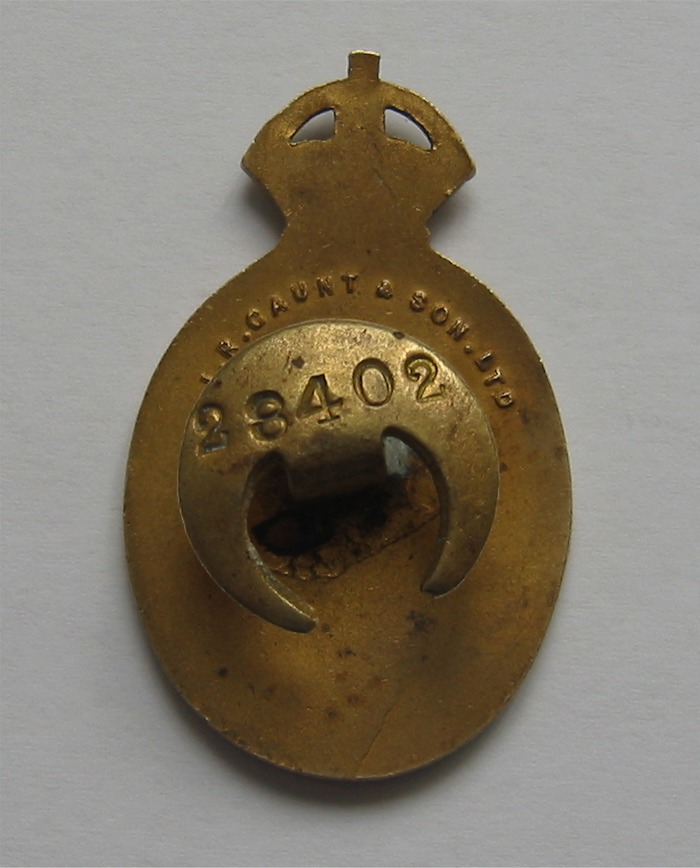
On War Service 1915 (back)
Number 28402
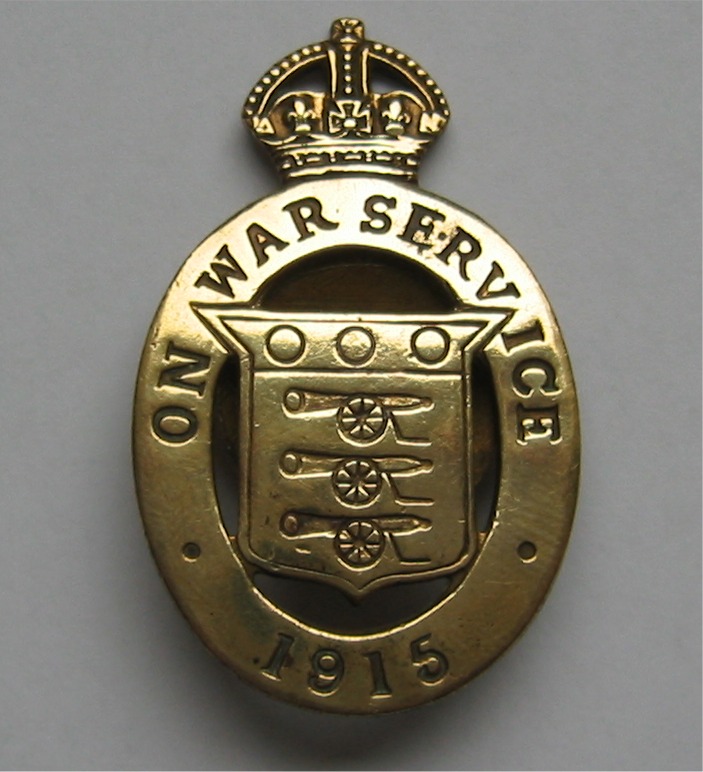
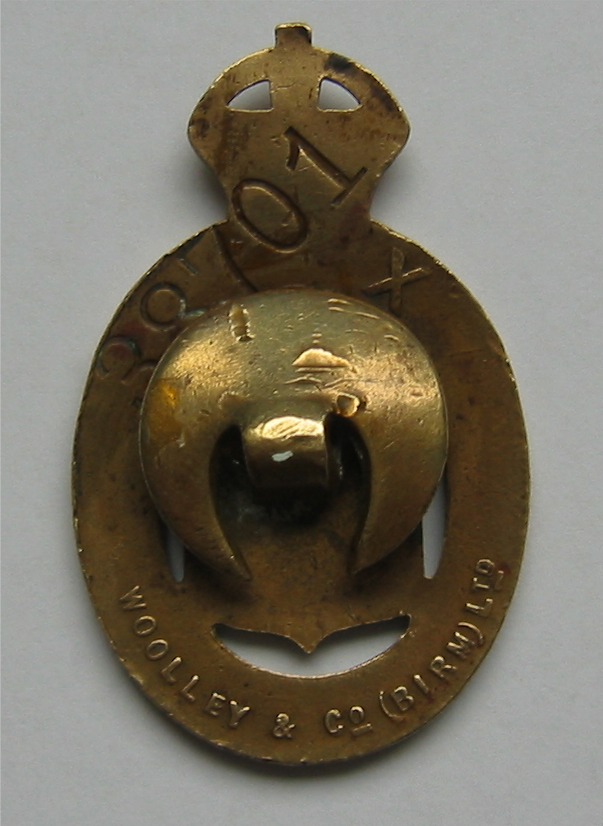
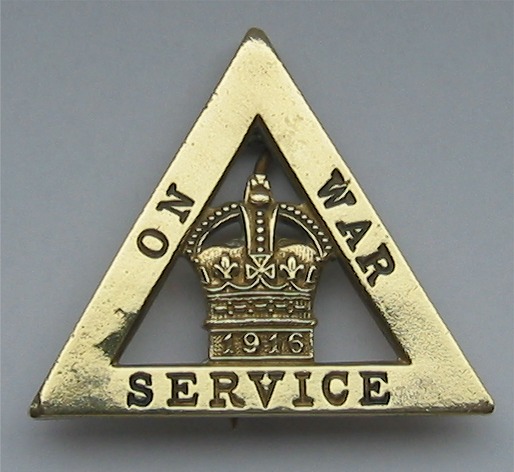
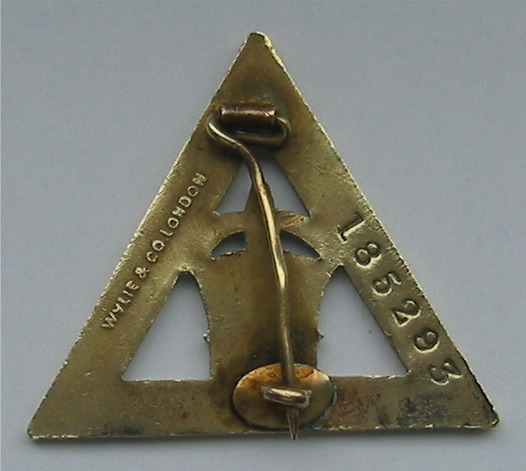
Manufactured by Woolley & Co. Birmingham
Number 38701
The later brass 'economy' badge
The Women's Munitions
Workers badge
On War Service 1916 (back)
Manufactured by Wylie & Co
London